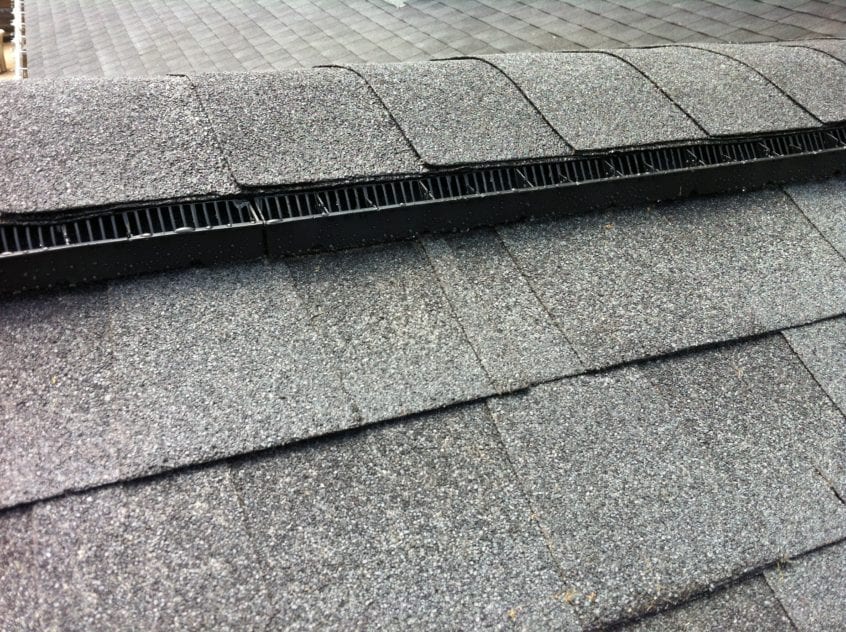In order to create a constant flow of air through your attic, you need have both intake AND exhaust ventilation to make sure the air has a way to come in and go out.
Intake ventilation is usually achieved through eave and soffit vents, or utilizing newer materials, like roof deck intake ventilation. Exhaust ventilation is often achieved through vents in the gables, deck or ridge. Often times, ridge venting is the best and aesthetically pleasing solution, but traditional square vents or “whirlybirds” can work as well. The key is to have the correct balance between the intake and exhaust ventilation to maximize airflow. A certified roofing professional can assess and calculate exactly what is needed in regards to rooftop ventilation.
Without proper ventilation, seasons and weather can take their toll on your home, attic, and roofing system. Summer heat can buildup in the attic. This can cause premature aging and cracking in wood and other roofing materials, as well as causing increased cooling costs and driving down the energy efficiency of the home. In the winter, warmer moist air caused by dishes, laundry, cooking, etc. can get trapped in attic, causing moisture damage and even possibly mold in extreme cases.
If in doubt, call a certified roofing professional to assess and make ventilation recommendations.

